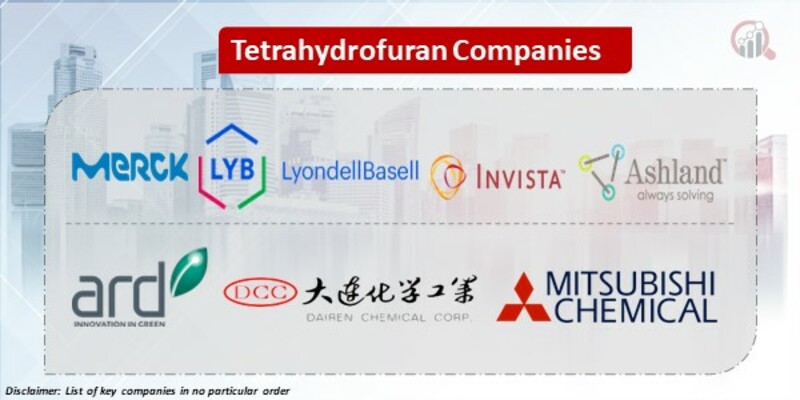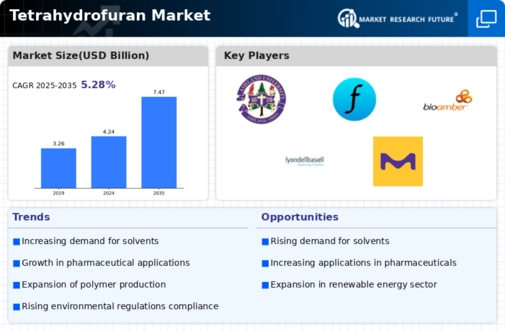Top Industry Leaders in the Tetrahydrofuran Market

Tetrahydrofuran, an organic compound valued for its solvent and intermediate properties, finds applications across diverse industries like plastics, textiles, pharmaceuticals, and paints. This growth is driven by several factors, including the burgeoning demand for spandex fibers, polyurethane, and APIs (active pharmaceutical ingredients).
Strategies Shaping the Competitive Landscape:
-
Product Diversification: Leading players like BASF, LG Chem, and Ashland are expanding their THF product portfolios with specialty grades catering to specific end-use applications. This allows them to cater to niche markets and command premium pricing. -
Vertical Integration: Companies like INVISTA and Hyosung are integrating upstream into raw materials like butadiene and propylene oxide, securing supply chains and cost competitiveness. -
Technological Advancements: Investments in sustainable production processes, bio-based THF alternatives, and energy-efficient recycling technologies are gaining traction, attracting environmentally conscious consumers and regulatory support. -
Regional Expansion: Asia Pacific, specifically China and India, boasts the highest THF consumption due to thriving textile and pharmaceutical industries. Players are strategically building production facilities in these regions for efficient market access. -
Partnerships and Acquisitions: Collaborations with downstream users like textile manufacturers and pharmaceutical companies enable market penetration and knowledge sharing. Acquisitions of smaller players with unique technologies or regional strengths further consolidate market positions.
Factors Influencing Market Share:
-
Production Capacity and Cost Efficiency: Companies with optimized production processes and access to cost-effective raw materials hold a competitive edge. -
Quality and Purity of THF: Stringent regulations in pharmaceutical and food industries necessitate high-purity THF, rewarding providers with robust quality control systems. -
Brand Reputation and Customer Relationships: Established players like BASF and Ashland, with strong brand recognition and long-standing customer relationships, maintain market leadership. -
Sustainability Initiatives: Environmentally friendly production practices and bio-based THF offerings resonate with eco-conscious consumers and attract regulatory incentives.
Key Companies in the Tetrahydrofuran market include
- Credence Chem Private Limited (India)
- Merck KGaA (Germany)
- LyondellBasell (Netherlands)
- Technical Chemical Company (U.S.)
- Ashland (U.S.)
- Mitsubishi Chemical Corporation (Japan)
- INVISTA (U.S.),
- BioAmber Inc. (U.S.)
- ASF Corporation (USA)
- Dairen Chemical Corporation (Taiwan)
Recent Developments:
August 2023: Hurricane Laura disrupts THF production in the US Gulf Coast, causing temporary supply shortages and price fluctuations.
October 2023: New research identifies potential health risks associated with Tetrahydrofuran exposure, raising concerns about worker safety and environmental regulations.
November 2023: BASF receives regulatory approval for its bio-based Tetrahydrofuran in food-contact applications, opening up a new market segment.
December 2023: Major Tetrahydrofuran producers announce price increases citing rising raw material costs and ongoing supply chain disruptions.

